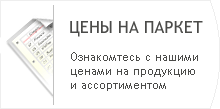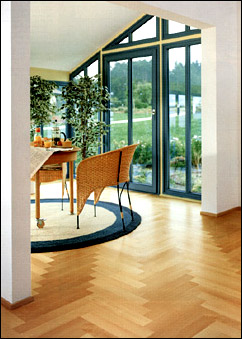 Block parquet — (otherwise
piece parquet) got such a name, because it consists of separate
parquet planks which are made of natural wood: oak, ash, cherry
and other sorts of wood.
Basic building material is wood, but the history of the parquet is dated since the epoch of the nobleman’s culture, when the
parquet floor became an integral characteristic feature of the wealth and prosperity, being at the same time the work of art and
the priceless property of the world culture.
Block parquet with ease unites in beauty and longevity, warmth and strength, art and luxury, and in accessibility, which is a
very important factor nowadays. The perfect quality characteristic features gave it an honored popularity.
In spite of the fact that the range of the block parquet is too high, we can single out three main categories of block
parquet, depending on the type of sawing with respect to the contour of the yearly rings — this is radial, tangential and mixed.
The great variety of parquet depends upon the different types of sawing according to the volume during the processing of raw
materials. It is very hard to get the parquet of the radial saw and at the same time the amount of the mixed saw parquet is very
high, this fact directly influences the parquet price. In spite of this fact, the main characteristics of the parquet of
different saw, for example hardness and stability of the geometrical sizes, are practically the same.
As stated above, there is a wide choice of wood sorts, further we will stop at some of them and give the approximate
technical characteristics in order to draw carefully the comparative picture of the materials.
A natural parquet floor is like the tiny planks of certain form, carefully adjusted to each other and covered with the
special lacquer or rubbed with the floor — polishes.
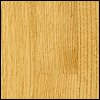 - 1st Sort (Radial). Parquet of the higher sort only with a radial saw.This kind of the parquet has practically an equal texture brightened up with medullary rays, which come to the surface of the face. Flaws in the wood, mechanical damages, twigs and gaps on the right side are not allowed.
|
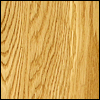 - 1st Sort (Tangential). Parquet of the higher quality. It is made of slats, got during the process of sawing the stem through the tangent to the annual rings. Defects, damages, twigs and gaps on the right side are not allowed.
|
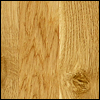 - 2nd Sort. Parquet without the selection by saw, which has the natural picture of the wood. Saps, strong knots with diameter 30mm, any inclination of the fibers, threads and color difference are acceptable. The mechanical damages are practically not allowed.
|
 - 3rd Sort. Light and dark twigs with diameter 50mm are allowed, the cracks caused by the loss of weight, wormholes, mechanical damages (no more than 10 – 15 %, no deeper than 1mm), which are vanished during the polishing, are also allowed.
|
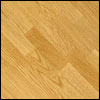 - Oak (quercus — latin name oak is originated from Greek kerkeen — rough; latin robur — oak wood; latin pedunculatus, trees from the beech family — Fagaceae with the hight up to 40 metres. Flowers are dioecious. A fruit is an acorn. It grows in the countries of Central and East Europe, in the middle and south part of CIS, in Crimea, on Caucasus in the deciduous and conifer-deciduous forests.
|
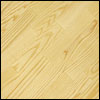 - Ash (ornus — latin name of plant). Hight of the tree is 10-20 metres and it is of oleaginous family — Oleaceae. Leaves are odd-pinnately-complicated, most of them have 7-9 ovate, oblong and spear-shaped leaves. Perianth is double and consists of bell and corona.
|
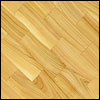 - Cherry (cerasus avium — latin bird cherry) grows wild in South Europe, on Caucasus and in the Asia Minor. It was cultivated in these places during prehistoric times.
|
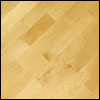 - Birch (Betula — latin name). This sort of wood has no kernel, sap-wood. Wood color is white with yellow or reddish tint. Medullary rays are narrow, they are seen only on a radial cut. Yearly layers are bad seen.
|
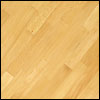 - Beech (fagus — latin name). This sort of wood has no kernel, ripe wood. The color of wood is yellowish, reddish-white, has a noble kind. Annual layers are clearly seen, heart-shaped rays are visible on all cuts.
|
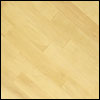 - Hornbeam (carpinus — latin name) is dissipated-vascular, non kernel sap wood. The color of wood is greyish-white. Heart-shaped rays are narrow, unnoticeable, the false-wide rays are noticeable on a transversal cut. Winding annual rings are well visible on transversal cut.
|
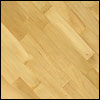 - Maple (acer — ëàò. íàçâ.) This sort of wood doesn't have nuclear, sap wood. A sap-wood and mature wood doesn't differ practically. Color of wood is white with yellowish or reddish tints. Heart-shaped rays are visible on all cuts, numerous. Annual layers are clear seen.
|
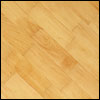 - Alder (alnus -latin name.)This sort of wood is without core and alburnum. Wood is of white colour. It quickly turns red and becomes brown. Medullary rays are narrow and imperceptible. It is difficult to discern yearly rings.
|
Parquet peculiarities
Parquet produced on the factory has to fit with the following requirements:
- High purity of the processing;
- Excellent geometry;
- Guaranteed humidity is 8-10 %;
- Controlled sorting;
- Wrapping film.
Block parquet advantages:
- Massiveness ;
- Longevity;
- Maintainability ;
- Warm and safe floor;
- Choice of laying the parquet (the different pictures).
The description and aesthetic features of the natural wood parquet
floors are determined by the qualityand the sort of wood. The most important characteristic feature
of the source material is hardness, which depends upon the sort, growing conditions and the humidity of the wood.
Choosing the materials for the parquet, the preference is given to the following sorts of wood: oak, beech, Russian maple
(sycamore, maple), American maple, hornbeam, Circassian and Manchuria walnut, pine-tree, ash-tree, birch and bamboo.
In more detail about block parquet:
|














